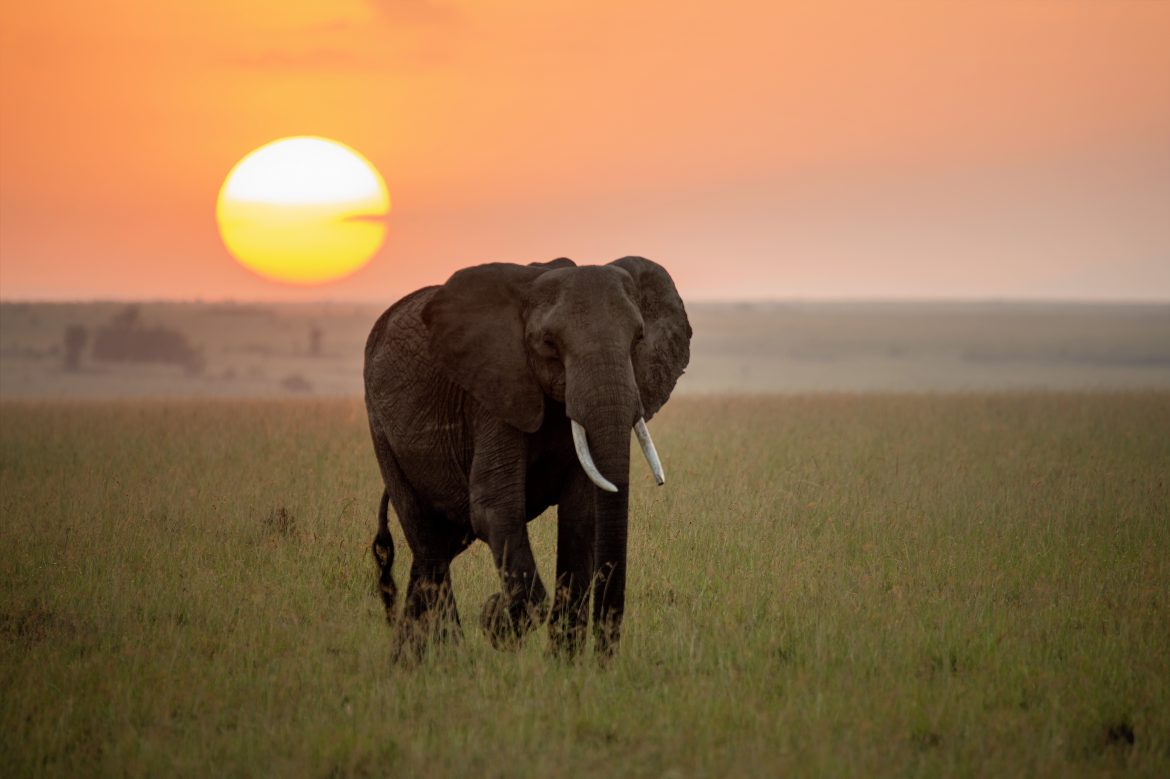This article was updated on April 12th, 2021.
World Elephant Day is celebrated every August 12th to create awareness about the serious threats that elephants face and to support the survival of the largest and majestic land mammal. These creatures roamed in their natural habitats by the millions, but during the modern era, their numbers have dramatically diminished to an estimated 450,000 to 700,000
African elephants and 35,000 to 40,000 Asian elephants due to years of environmental changes by worldwide climatic reversals, mainly lack of rain, destroying their feeding grounds of grasses, leaves, bamboo, bark, and roots that satisfy their appetite of 300 to 400 pounds of food a day. Their habitats have been minimized by land development, and the most hideous of reasons perpetuated by man, poaching.
The elephants’ average natural life span is 65 years or more, but they have been and still are killed, about 70,000, for their tusks to satisfy the lucrative ivory market. Ivory tusks are harvested legally, but poaching is still about 80% of elephants’ deaths. Although conservationists and governments have successfully combated poaching, it is still an ongoing battle and hopefully will be completely eradicated in the near future.
Internationally, various countries have banned the importation of ivory. Some of this work is being done through the Convention on International Trade in Endangered Species (CITES). In addition, in 1988, the African Elephant Conservation Act was passed, banning the importation of ivory into the U.S. and allowing the government to enforce strict action against illegal ivory imports and providing funds for elephant field conservation projects.
There are two species classifications of elephants, the African (Loxodonta africana) and the Asian (Elephas maximus). However, genetic studies have provided new insights into their relationship. The African has two subspecies, the Savanna and the Forest, while the Asian has four subspecies, Sri Lankan, India, Sumatran, and Borneo. A bit of trivia you can impress your friends with is how to tell the difference between an African and an Asian elephant. For example, the African elephant has large ears in the shape of the African continent while the Asian has much small ones.
They are very sociable animals forming tight matriarchal families, or herds, composed of related females caring for the young, weighing between 200 to 250 lbs. when born, and a mortality rate exceeding 30%.
The oldest female, or matriarch, is the head of the herd. The males, or bulls, leave the family unit between the ages of 12 to 15 and live solitary lives or with other males temporarily. You’ve always heard the phrase of someone having the memory of an elephant, well it’s true, at least for the elephant. They are very intelligent, with memories that encompass many years. This memory allows the matriarch to remember past watering holes and lead the herd to them when drought compromises their feeding grounds and water supply.
Several sanctuaries and wildlife do a good job maintaining these beautiful animals, but it is challenging. If you want to participate and contribute to the preservation of elephants, you can visit Wildlife Conservation Society, sheldrickwildlifetrust.org, savetheelephants.org,
elephantconservation.org. You can help support the conservation of this magnificent mammal, starting today!
 Food
Food Farmers
Farmers Sustainable Living
Sustainable Living Living Planet
Living Planet News
News